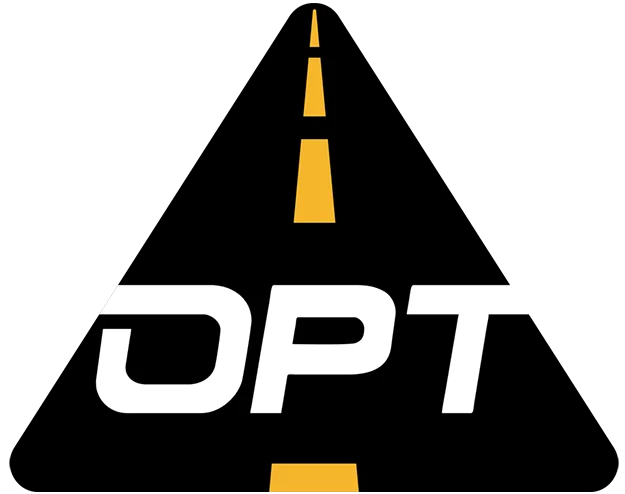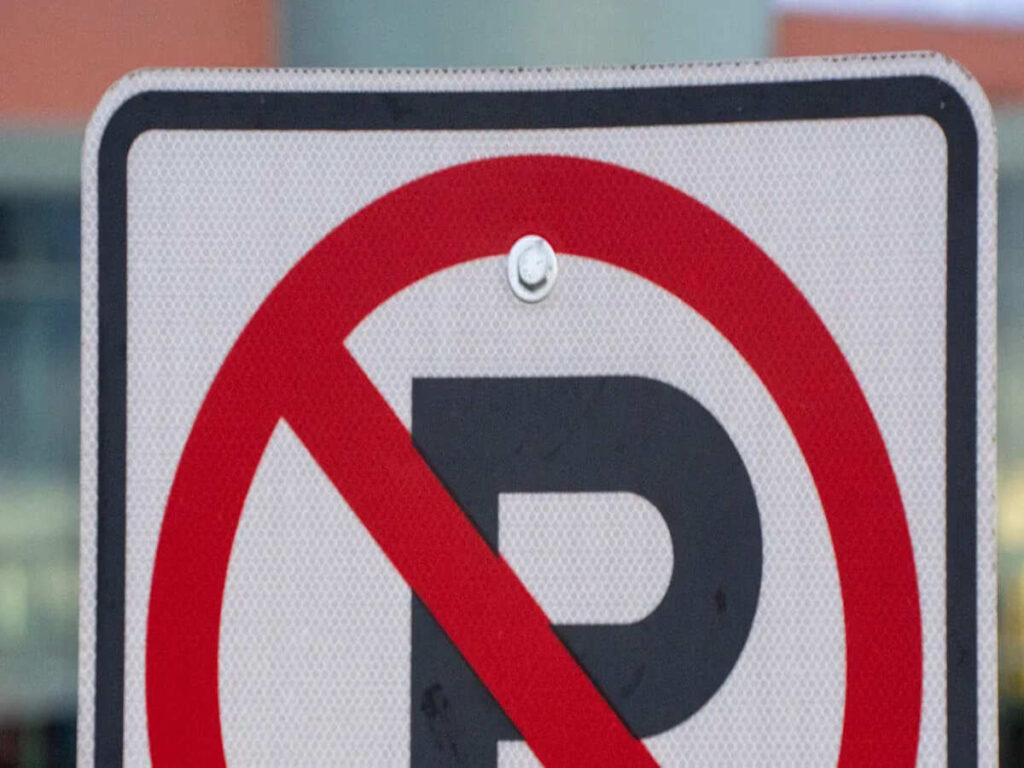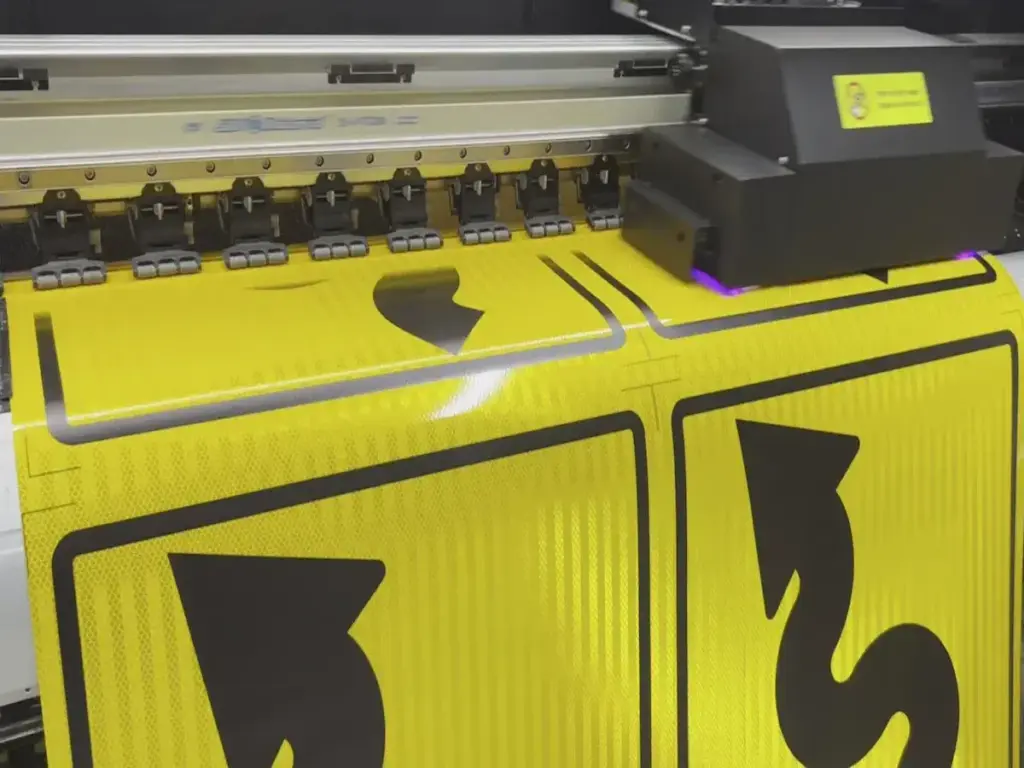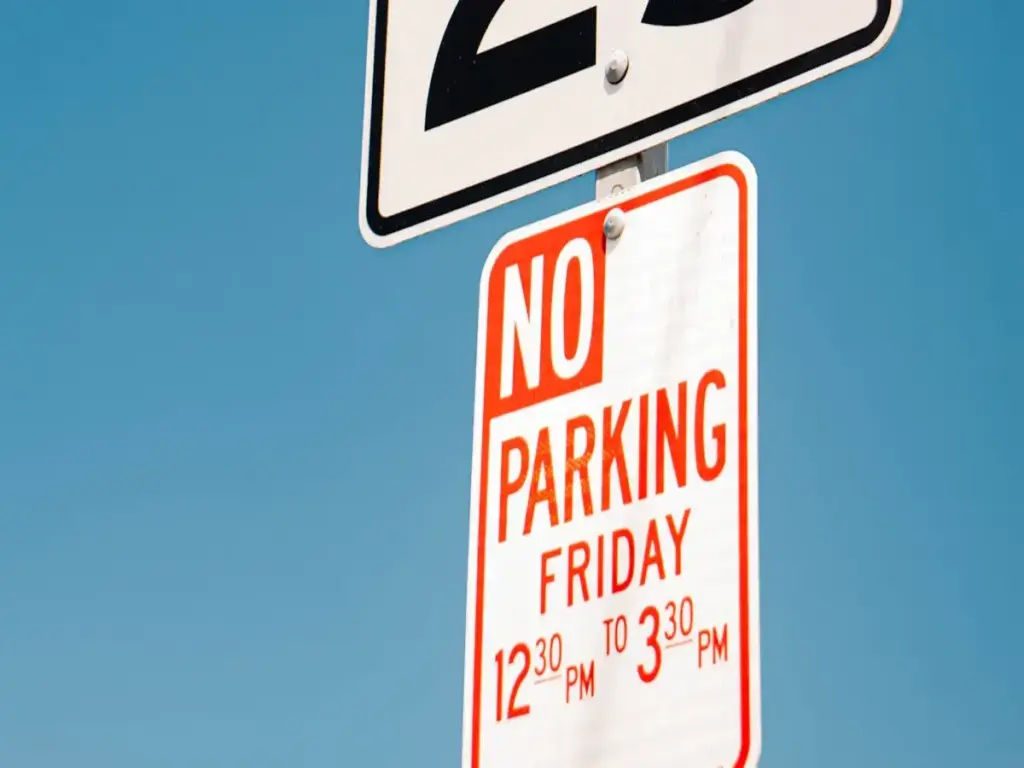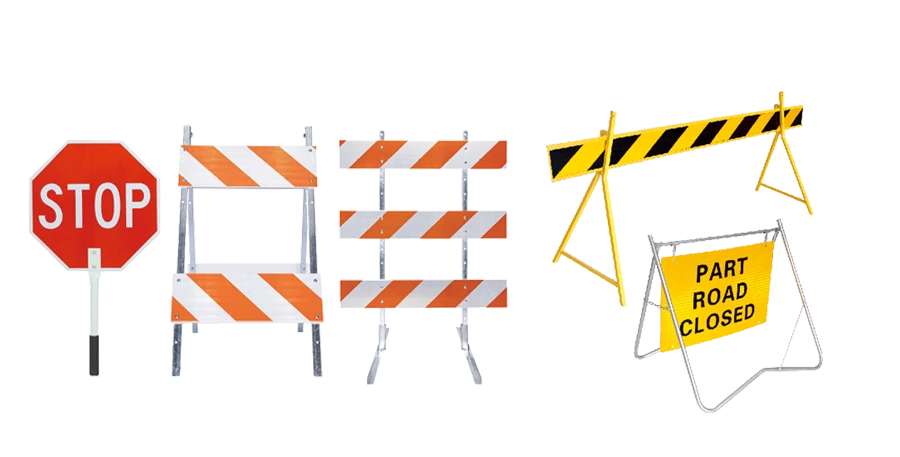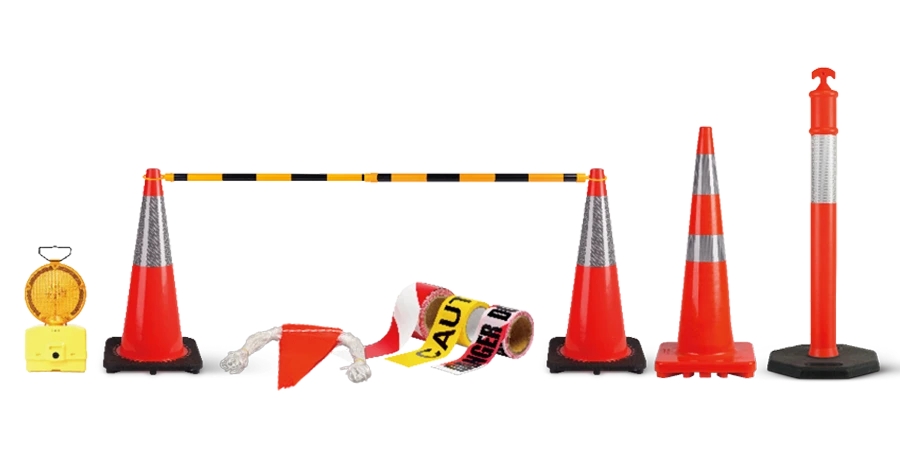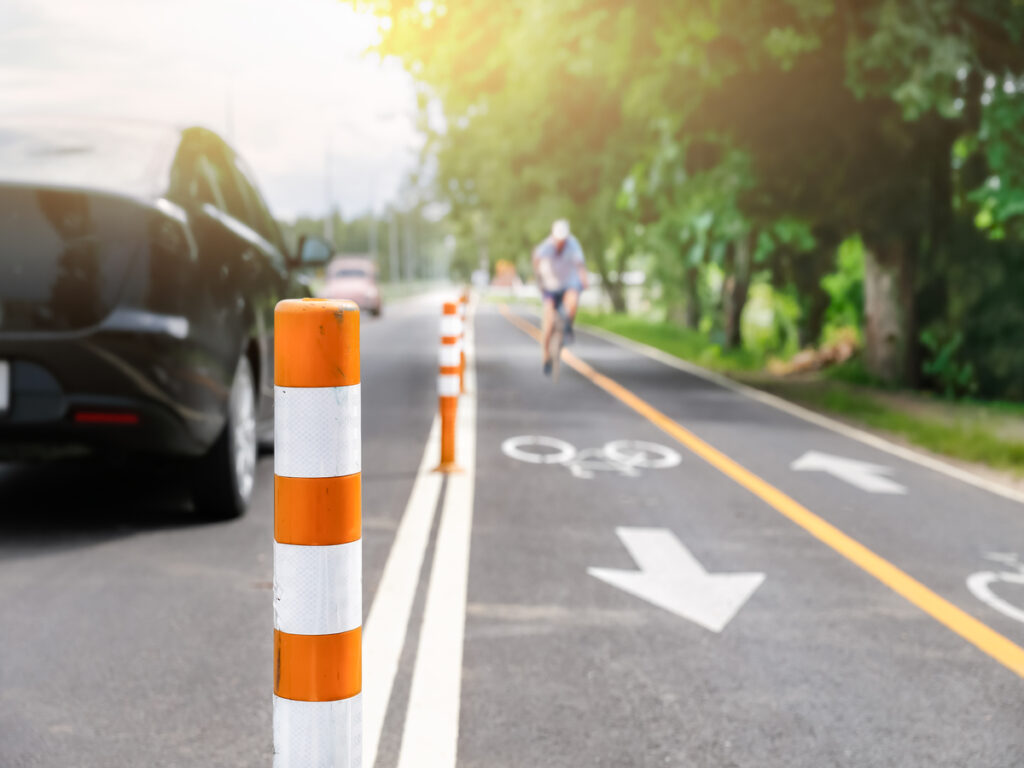
تعتبر مراسلة الطرق مهمة للحفاظ على حركة المرور آمنة ومنظمة. إنهم يساعدون السائقين على البقاء في الممرات, خاصة على المنحنيات أو بالقرب من البناء. تظهر الأبحاث أن مراسلة الطرق العاكسة يمكن أن تقطع الحوادث 40%. هذا يثبت مدى فائدةهم على طرق اليوم. لكن, لا تعمل كل تصميمات تحديد الطرق بشكل جيد. يمكن أن تزعج التصميمات السيئة السائقين وجعل القيادة أكثر صعوبة أو غير آمنة. لهذا السبب يعتقد السائقين ما يعتقد السائقون. الهدف هو جعل الطرق آمنة وبسيطة للجميع.
الوجبات الرئيسية
- علامات طويلة جدا يمكن أن تمنع السائقين’ وجهات النظر. استخدم أقصر, علامات لامعة لجعل الطرق أكثر أمانًا وأسهل رؤيتها.
- علامات وضعت بشكل سيء تربك السائقين. قم بمساحةهم جيدًا واستخدام أنماط واضحة لتوجيه حركة المرور بشكل أفضل.
- من الصعب ملاحظة العلامات القديمة أو المكسورة. إصلاحها في كثير من الأحيان واستخدم مواد قوية للحفاظ على الطرق آمنة.
- الكثير من العلامات يمكن أن يصرف انتباه السائقين. استخدمها فقط عند الحاجة لجعل الطرق سهلة لمتابعة.
- السائقين’ تساعد الآراء على تحسين تصاميم الطرق. شارك أفكارك لجعل الطرق أكثر أمانًا للجميع.
ال 5 معظم التصميمات المحددة لحركة المرور المكروهة من قبل السائقين
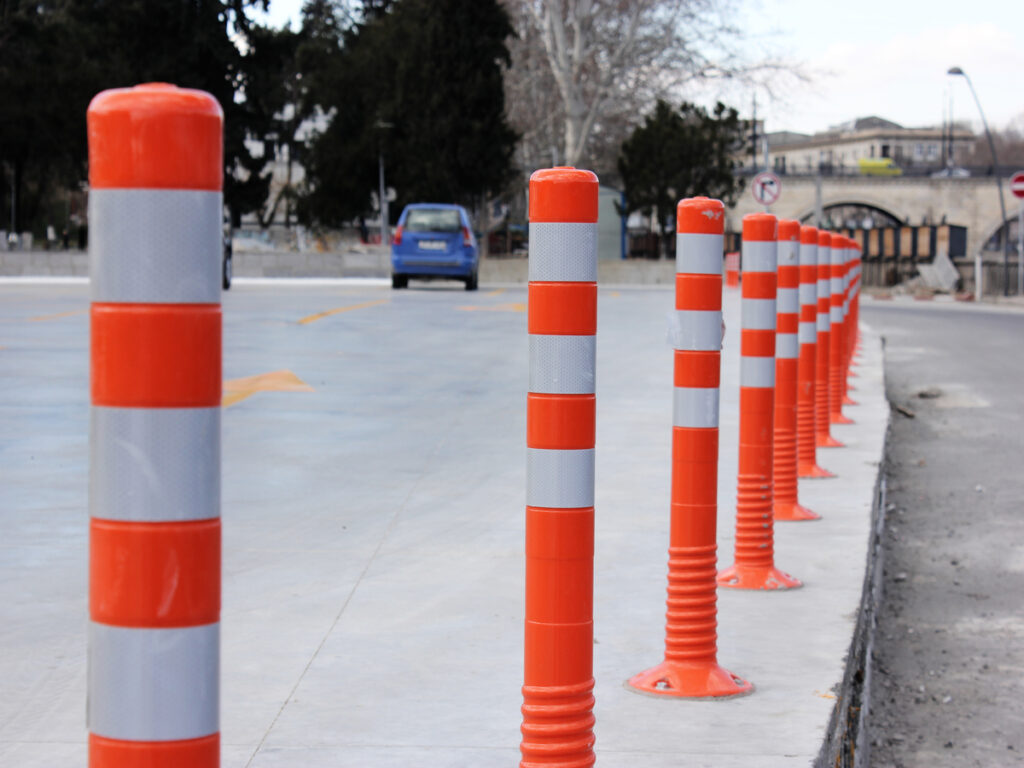
المتفوقون المفرطون والانسداديون
هل سبق لك أن دفعت ليلا وكافحت لرؤيتها? بعض مراسلة الطرق طويل جدًا وحظر وجهة نظرك. يمكن أن تكون هذه العلامات الطويلة أسوأ في الطقس السيئ. يجعلون من الصعب رؤية الطريق بوضوح. هذا يمكن أن يسبب مواقف قيادة خطيرة. كثير من السائقين يكرهونهم لأنهم يشعرون بأنهم عقبات, ليست أدوات مفيدة.
الإصلاح? استخدام الطريق الأقصر المرمى مع الأسطح العاكسة. من السهل رؤيتها ولا تمنع عرضك. إنها تساعدك على التركيز على القيادة بدلاً من القلق بشأن علامات طويلة.
مراسلة ضعيفة في وضعها (إرشادات غير واضحة)
فكر القيادة في منطقة البناء والشعور بالضياع. وضع سيئ المرمى يمكن أن تخلط بين السائقين. إذا كانت قريبة جدًا أو في أنماط غريبة, أنها تسبب مشاكل. قد لا تعرف حارة متابعتها. يمكن أن يؤدي هذا الالتباس إلى تحركات مفاجئة أو حتى حوادث.
الحل بسيط: خطة مثل السائق. التباعد المناسب والأنماط الواضحة تجعل القيادة أسهل. عندما الطريق المرمى يرشدك جيدًا, تشعر بأمان وأكثر ثقة.
تلاشى أو أضرار
تلاش أو طريق مكسور المرمى مثل العلامات غير القابلة للقراءة. إنهم لا يساعدون ويتركون السائقين في التخمين. هذا أسوأ في الليل أو في ضوء خافت. قد تفوت منعطفًا أو تختار الممر الخطأ بسببه.
الجواب هو صيانة منتظمة. استخدم مواد قوية تقاوم التلاشي والكسر. هذا يمنع الارتباك ويبقي الطرق أكثر أمانًا. لا أحد يحب علامات غير واضحة تسبب قيادة محفوفة بالمخاطر.
نصيحة: إذا رأيت طريق تالف المرمى, إبلاغهم بالمسؤولين المحليين. إنه عمل صغير يمكن أن يجعل الطرق أكثر أمانًا للجميع.
الإفراط في استخدام مراسلة الطرق في المناطق غير الحرجة
هل سبق لك مدفوع على طريق مع العديد من العلامات? استخدام الكثير من الطريق المرمى حيث لا توجد حاجة يمكن أن يربك السائقين. بدلا من المساعدة, يجعلون الطريق يبدو فوضويًا وأصعب متابعته. يكره العديد من السائقين هذا لأنه يسبب الانحرافات. إنه مثل قراءة كتاب به الكثير من الملاحظات - تفقد التركيز.
هذه المشكلة أسوأ على الطرق البسيطة مثل فترة طويلة, مستقيم. لا تحتاج إلى تذكيرات ثابتة للبقاء في حارةك هناك. علامات إضافية يمكن أن تجعل الطريق يشعر بالازدحام والمزعج. هذا يمكن أن يؤدي إلى الإحباط أو حتى الأخطاء أثناء القيادة.
الإصلاح? استخدم فقط الطريق المرمى حيث تكون هناك حاجة إليها حقًا. أماكن مهمة مثل المنعطفات الحادة, التقاطعات, أو مناطق البناء تستفيد أكثر. إن الحفاظ عليها بسيطة يساعد السائقين على التركيز بشكل أفضل. عدد أقل من العلامات يمكن أن تعني الطرق الأكثر أمانًا.
نصيحة: إذا رأيت الكثير من الطريق غير الضروري المرمى, أخبر قسم المرور المحلي الخاص بك. يمكن أن تساعد ملاحظاتك في جعل الطرق أسهل في القيادة.
عدم المرونة أو القدرة على التكيف
هل سبق لك أن تعثرت لأن علامات الطرق لم تتكيف مع التغييرات? طريق ثابت المرمى لا يمكن التكيف مع أنماط حركة المرور الجديدة أو مناطق البناء. هذا يجعل السائقين منزعجين ويسبب التأخير. قد يبدو أن الطريق لا يصنع لاحتياجاتك.
طريق مرن المرمى إصلاح هذه المشكلة. يمكنهم التحرك أو التغيير لتناسب الظروف الجديدة. على سبيل المثال, من السهل إعادة وضعها بسرعة الوزن بسرعة. مواد قوية تبقيهم يعملون في الطقس السيئ أو مع الاستخدام المتكرر. حتى أن البعض لديه أسطح عاكسة أو أضواء تعمل بالطاقة الشمسية, يجعلها أكثر أمانًا في الليل.
إليك مدى مرونة الطريق المرمى تحسين القيادة:
| ميزة | وصف | التأثير على السائقين |
|---|---|---|
| مخاريط متعددة الاستخدامات | التكيف مع التغييرات, مثل المخاطر التي تظهرها الأقماع الخضراء. | يزيد السلامة والثقة في التخطيط على الطرق. |
| تصميم خفيف الوزن | يجعل التحرك المرمى سريع وسهل. | يقلل من التأخير ويحسن تدفق حركة المرور. |
| مواد متينة | يتعامل مع سوء الاحوال الجوية والاستخدام المتكرر. | يبقى موثوقة, جعل السائقين أكثر رضا. |
- عاكس المرمى مساعدة السائقين على رؤية أفضل في الليل, خفض الحوادث.
- الأضواء التي تعمل بالطاقة الشمسية توفر الطاقة وتجعل الطرق أكثر أمانًا.
يساعد استخدام التصميمات المرنة الطرق على تلبية الاحتياجات المتغيرة. يشعر السائقون بأمان وأكثر ثقة, حتى في البقع الصعبة مثل الالتفاف أو مناطق البناء.
إذا كنت تبحث عن مراسلة موثوقة للبيع لتحسين السلامة على الطرق وتقليل الارتباك, الدفع مراسلة الطرق الأوبترافيك. مصمم للوضوح والمتانة, توفر مراسلة السلامة على الطرق المعروضة للبيع إرشادات واضحة للسائقين وتقليل فرص الحوادث. لا تنتظر - اجعل طرقك أكثر أمانًا اليوم!
اتصل بنا الآن لمزيد من التفاصيل أو لتقديم طلب. تبدأ القيادة الآمنة بأحوال مرور أوبترافيك!
لماذا تهم ملاحظات السائق: الاستماع إلى احتياجات مستخدمي الطرق
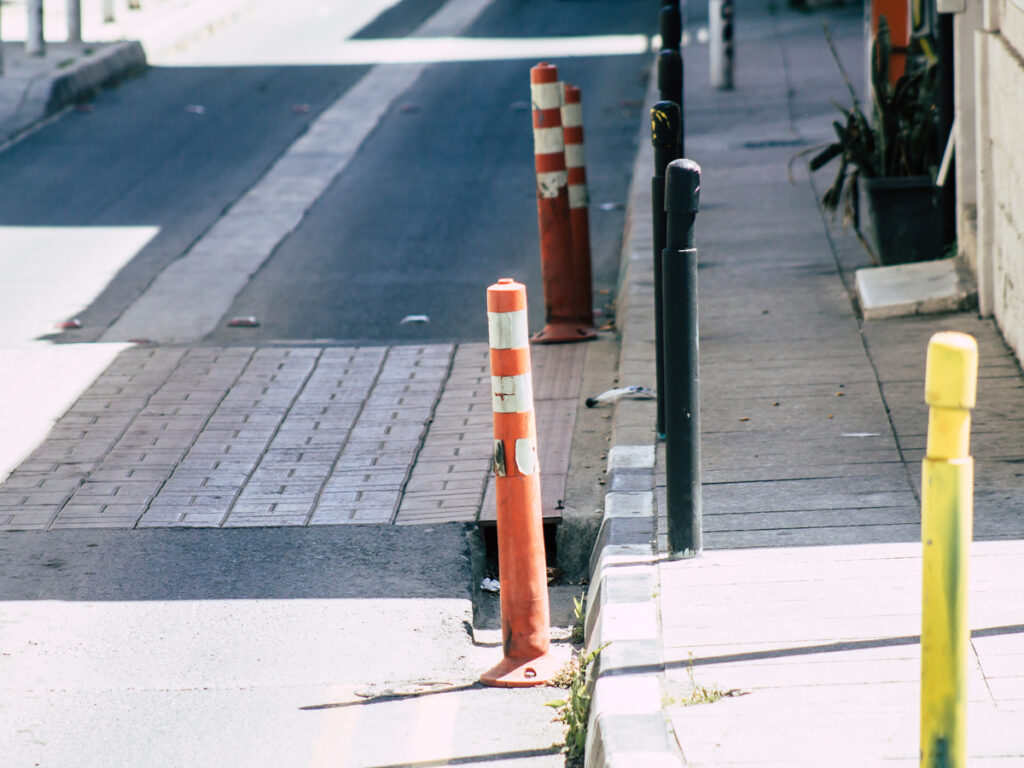
لماذا الاستماع إلى برامج التشغيل أمر مهم لتحسين الرسم
هل سبق لك أن انزعجت من علامات الطرق غير الواضحة? يشعر العديد من السائقين بنفس الطريقة. يمكن أن تساعد آرائك في تحسين هذه التصميمات. عندما يسمع المهندسون من السائقين, يمكنهم إصلاح المشاكل. هذا يجعل القيادة أكثر أمانًا وأقل إرهاقًا.
توضح ملاحظات السائق الأسباب تجارب القيادة السيئة. على سبيل المثال, علامات غير واضحة قد تجعلك تبديل الممرات فجأة. هذا يمكن أن يؤدي إلى الحوادث. تساعد مشاركة أفكارك في العثور على هذه المشكلات وحلها. الطرق الأكثر أمانًا أفضل للجميع.
تضمن ملاحظاتك أيضًا علامات العمل في مواقف الحياة الواقعية. قد يعتقد المهندسون أن التصميم جيد, لكن السائقين يعرفون أفضل. عندما تشارك تجربتك, تصبح الطرق أسهل في المتابعة.
ماذا تقول الدراسات عن آراء السائق
تظهر الأبحاث أن العلامات السيئة يمكن أن تسبب غضب الطرق. تخيل أن تكون عالقًا لأن العلامة أربكتك. من السهل الإحباط. تظهر الدراسات الاستقصائية علامات واضحة تجعل السائقين يشعرون بالهدوء والأمان.
تثبت الدراسات أيضًا علامات جيدة تقلل من حوادث. علامات عاكسة ومؤلمة في وضع جيد أقل من معدلات الحوادث. الاستماع إلى السائقين ليس مفيدًا فقط - إنه ينقذ الأرواح.
في المرة القادمة التي ترى فيها علامة سيئة, تحدث. تساعد ملاحظاتك في جعل الطرق أكثر أمانًا للجميع.
كيفية تصميم مروحات المرور لتحقيق أقصى سلامة ورضا السائق
مبادئ تصميم الرسم الجيد
طريق جيد المرمى يجب أن تبقي الطرق آمنة وسهلة الاستخدام. عندما صنعت بشكل جيد, أنها تمنع الارتباك ومساعدة السائقين. فيما يلي بعض القواعد البسيطة التي يجب متابعتها:
- التركيز على السلامة: المحددات يجب فصل السيارات, الدراجات, والمشاة بوضوح. هذا يتجنب الحوادث ويبقي الجميع آمنين.
- تحسين الرؤية: المواد العاكسة تجعل الطرق أسهل في الليل.
- اجعلها قوية: تصاميم مرنة وصعبة, مثل الوظائف البلاستيكية, يدوم لفترة أطول.
- فكر في الجميع: يجب أن تساعد التصميمات الأطفال والأشخاص ذوي الإعاقة أيضًا.
باستخدام هذه الأفكار, المرمى يمكن حماية جميع مستخدمي الطرق والعمل بشكل أفضل.
مطابقة الروح مع طرق مختلفة
ليست كل الطرق متشددة, لذا المرمى يجب أن تطابق الطريق. تغيير التصميمات لكل نوع طريق يجعلها تعمل بشكل أفضل. على سبيل المثال:
- الطرق السريعة: استخدم منشورات قوية يمكنها التعامل مع السيارات السريعة. علامات عاكسة تساعد السائقين على رؤية أفضل في الليل.
- ممرات الدراجة: الوظائف المرنة حماية راكبي الدراجات وابتعادهم عن السيارات.
- شوارع المدينة: في المناطق المزدحمة, المرمى توجيه حركة المرور وحماية ممرات الدراجات. هذا يبقي الجميع آمنين وحركة المرور.
تظهر الدراسات طريق مرن المرمى قطع وقت السفر 25% خلال ساعات الذروة. كما يقللون من الحوادث 30%. سواء كان طريقًا سريعًا أو ممرًا للدراجات, مطابقة التصميمات على الطريق يجعل القيادة أكثر أمانًا وأكثر سلاسة.
كيف تساعد التكنولوجيا على المراسلة الحديثة
التكنولوجيا تغير كيف المرمى عمل. أدوات جديدة مثل المواد العاكسة والأنظمة الذكية تجعل الطرق أكثر أمانًا وأفضل.
| نوع التكنولوجيا | ماذا تفعل |
|---|---|
| مواد عاكسة | يرتد الضوء إلى السائقين, مساعدتهم في الرؤية في الليل. |
| مصابيح LED | تعمل الأضواء التي تعمل بالطاقة الشمسية على تحسين الرؤية في الطقس السيئ أو في الليل. |
| الأنظمة الذكية | يرسل تحديثات في الوقت الفعلي إلى برامج التشغيل, تحسين السلامة وتدفق حركة المرور. |
| مواد صديقة للبيئة | يستخدم المواد الخضراء التي تدوم لفترة أطول وتساعد البيئة. |
هذه الأدوات تجعل المرمى أكثر أمانًا وأكثر فائدة. على سبيل المثال, ذكي المرمى في ممرات الدراجات تحذر السائقين من راكبي الدراجات القريبين. هذا يقلل من الحوادث. باستخدام التكنولوجيا, يمكن أن تلبي الطرق احتياجات اليوم بشكل أفضل.
دراسات الحالة: تصميمات تحديد فعالة تحب السائقين
دراسة حالة 1: نجاح المدينة في تحسين التصميمات الراسخة
تصور مدينة مزدحمة حيث تتحرك حركة المرور بشكل جيد, والناس يشعرون بالأمان. هذا ما حدث عندما قامت إحدى المدن بتحسين طريقها المرمى. لقد حددوا مشاكل مثل علامات غير واضحة وسوء الوضوح, جعل الشوارع أكثر أمانًا للجميع.
المدينة لم تضيف المزيد من العلامات فقط. لقد استخدموا نقاط المرنة والمواد العاكسة. خلقت هذه التغييرات ممرات دراجة محمية وفصل بين حارة أفضل. وجد السائقون أنه من الأسهل التنقل, وشعر راكبي الدراجات بأمان مع الحواجز الجسدية.
إليك ما تغير:
| نوع التحسين | النسبة المئوية التغيير |
|---|---|
| معدل الحوادث | -25% |
| حركة المرور على الأقدام | +18% |
كانت النتائج واضحة. ساعد عدد أقل من الحوادث والمزيد من الأشخاص الذين يمشون الشركات المحلية. هذا يوضح كيف يمكن للتصميمات الذكية تحسين الطرق للجميع.
نصيحة: إذا كانت مدينتك تعاني من مشاكل مرورية, تشير إلى نقاط مرنة وعكس المرمى. إنها إصلاحات سهلة وفعالة.
دراسة حالة 2: مراسلة ذكية في مناطق بناء الطرق السريعة
يمكن أن تخلط مناطق بناء الطرق السريعة السائقين وتسبب حوادث. لكن أحد المشاريع أظهر مدى ذكاء الطريق السريع المرمى يمكن أن يساعد.
هذا الطريق السريع المرمى تستخدم مصابيح LED التي تعمل بالطاقة الشمسية والمواد العاكسة. قاموا بتوجيه السائقين من خلال مناطق صعبة وتعديلها لتغيير حركة المرور. هذا جعل القيادة أكثر أمانًا وأقل إرهاقًا.
| نوع الأدلة | وصف |
|---|---|
| إضاءة LED | تعمل الأضواء التي تعمل بالطاقة الشمسية على تحسين الرؤية وحوادث أقل في المدن. |
| المراسلين الذكي | الطرق مع ذكي المرمى رأى 30% عدد أقل من الحوادث. |
| مواد عاكسة | أزرار الطرق العاكسة قطعت حوادث الليل بشكل كبير. |
في كوبنهاغن, حوادث مماثلة لمشروع 25%. كما عززت حركة المرور على الأقدام 18%, مساعدة السلامة والاقتصاد. توضح هذه الأدوات الذكية كيف يمكن للتكنولوجيا أن تجعل الطرق الصعبة أكثر أمانًا.
ملحوظة: ذكي المرمى ليس فقط للطرق السريعة. إنهم يعملون بشكل جيد في ممرات الدراجات أيضًا, إبقاء راكبي الدراجات آمنًا ومرئيًا.
طريق المرمى ساعد في الحفاظ على آمنة الطرق, لكن التصميمات السيئة يمكن أن تزعج السائقين وتسبب مشاكل. مشكلات مثل العلامات الطويلة أو تلك المكسورة تجعل القيادة أكثر متعة وأقل متعة. يمكن أن يؤدي استخدام المنشورات المرنة والمواد العاكسة إلى إصلاح هذه المشكلات جيدًا.
الاستماع إلى السائقين مهم للطرق الأكثر أمانًا. أفكارهم تظهر مشاكل في الحياة الواقعية وتساعد على تحسين التصميمات. تثبت الدراسات الطريق السريع الذكي المرمى الحوادث المنخفضة بواسطة 25%, بينما تقلل تلك العاكسة من الحوادث 40%. ممرات الدراجة المحمية, مصنوع من تصميمات جيدة, اجعل ركوب الدراجات أكثر أمانًا واحصل على المزيد من الأشخاص الذين يمشون أو ركوب الدراجات.
| نوع الأدلة | الإحصاء/التأثير |
|---|---|
| عدد أقل من الحوادث مع ذكية المرمى | 25% انخفاض معدلات الحوادث |
| المزيد من حركة المرور في وسط المدينة | 18% الارتفاع في نشاط المشاة |
| تقليل الانهيار مع انعكاس المرمى | حتى 40% عدد أقل من الحوادث |
| انخفاض معدلات الاصطدام مع التكنولوجيا التكيفية | حتى 30% عدد أقل من الحوادث في الطقس السيئ |
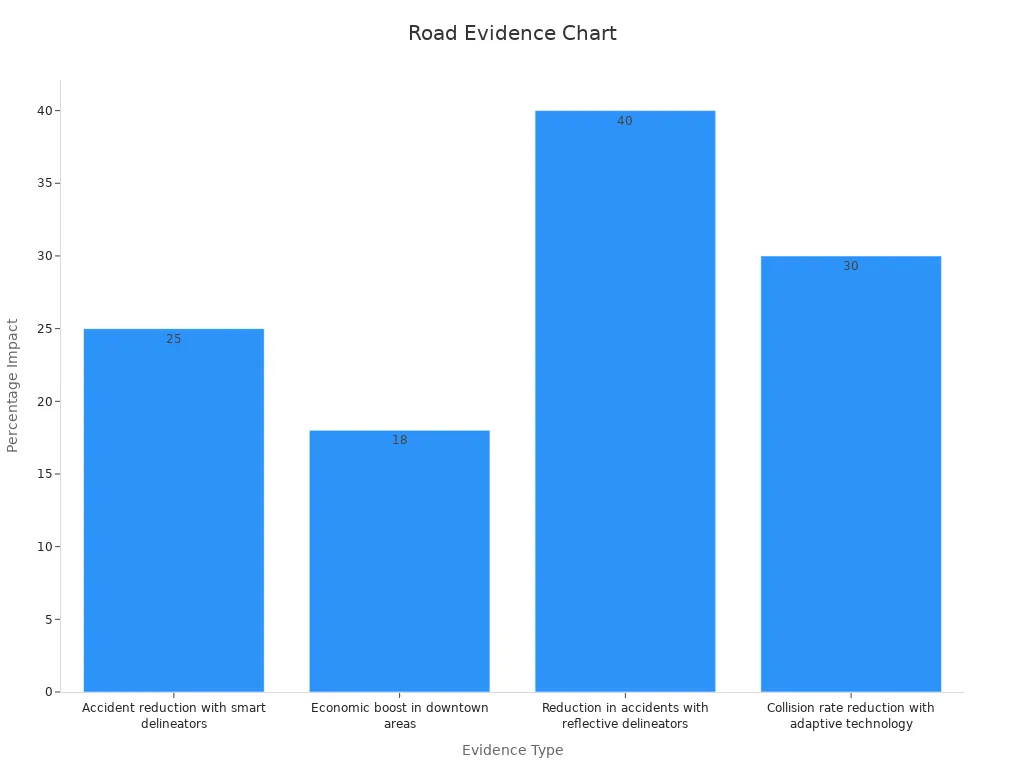
التصميمات الجيدة والرعاية العادية تجعل الطرق أكثر أمانًا وأسهل في الاستخدام. ممرات الدراجة المحمية, على سبيل المثال, استخدم مواد قوية وعلامات واضحة لحماية راكبي الدراجات. من خلال التركيز على هذه الإصلاحات, يمكن للمهندسين والمخططين جعل الطرق أفضل للجميع.
نصيحة: أخبر قسم المرور في مدينتك عن علامات الطرق السيئة. يمكن أن تساعد ملاحظاتك في إنشاء تصميمات أكثر أمانًا.
التعليمات
ما هي المراسلات على الطرق, ولماذا هي مهمة?
مراسلة الطرق هي علامات توجه حركة المرور وتحافظ على سلامة الطرق. إنهم يساعدون السائقين على البقاء في ممراتهم على المنحنيات أو بالقرب من البناء. لراكبي الدراجات, أنها تجعل ممرات الدراجات أكثر أمانًا عن طريق فصل الدراجات عن السيارات.
كيف تعمل مراسلة الطرق على تحسين سلامة الدراجات?
يحافظ المروحون على سلامة راكبي الدراجات عن طريق وضع علامة على حواف حارة الدراجات الصافية. تعمل المشاركات المرنة أو علامات عاكسة تجعل ممرات الدراجات أسهل في الرؤية. هذا يقلل من الحوادث ويمنح راكبي الدراجات مكانًا أكثر أمانًا للركوب.
يمكن استخدام مراسلة الطرق على جميع أنواع الطرق?
نعم, يعمل المراسمون على الطرق السريعة, شوارع المدينة, ومسارات الدراجة. يعتمد تصميمهم على الطريق. تستخدم الطرق السريعة مشاركات قوية, في حين أن ممرات الدراجات تستخدم ممرات مرنة للسلامة.
كيف يمكنني الإبلاغ عن مراسلة الطرق التالفة?
إذا رأيت تحديدًا مكسورًا أو باهتًا, أخبر مكتب المرور المحلي الخاص بك. تساعد مشاكل الإبلاغ في جعل الطرق أكثر أمانًا للسائقين وراكبي الدراجات.
هل هناك خيارات صديقة للبيئة لترسيط الطرق?
نعم, بعض المروحات مصنوعة من البلاستيك المعاد تدويرها. هذه تدوم لفترة أطول وأفضل للبيئة. إنها رائعة في ممرات الدراجات والمناطق التي تحتاج إلى خيارات مستدامة.
